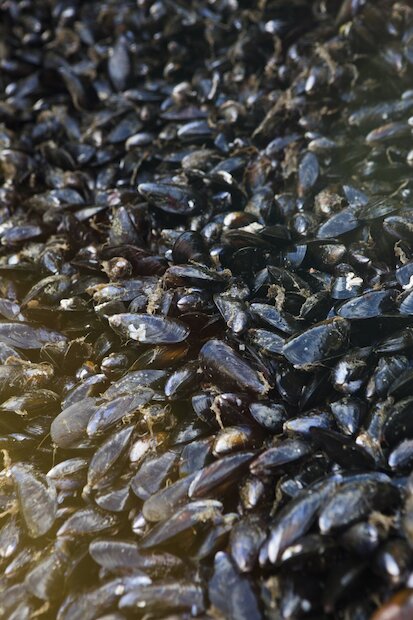Basta Voe in Yell is about as far from London as you can get while still in the UK.
Yet rope-grown mussels nurtured in the pristine waters of Yell are in high demand in top London eateries.
Marketed under the Shetland Select name, you won’t find these mussels in supermarkets. They are so prized for their quality and consistency that hotels and high-end restaurants are prepared to pay a premium for them.
The common mussels, scientific name Mytilus edulis, cultivated off Yell are an entirely natural and organic product that requires nothing more intensive than a helpful nudge from brothers Christopher and Marvin Thomason.
Christopher tells me that local knowledge, gained during more than two decades of farming mussels as well as many more years working as a commercial fisherman before that, allow them to pinpoint the spot in Basta Voe where the spawn laid by mature wild mussels naturally gathers.
Driven by tide, wind and undersea topography, the clouds of eggs and sperm collect in clusters and it is here that the brothers place their ropes, giving the mussel larvae something to cling to.
And there are a lot of ropes. Each main line is 220m long, with maybe 20-30 of them in place at any one time. Ropes, spaced seven metres apart and hanging down five metres into the water, give the immature mussels something to latch onto as they grow.
The brothers then keep a keen eye on their infrastructure, thinning out the millions of baby mussels as they develop to give the molluscs space to fulfil their potential. The baby ones they take off are not thrown away but seeded onto new ropes where they will grow to their market size of up to 10cms, a process that can take up to two years. Usually purple or blue in colour although brown isn’t uncommon, they’re a member of the same family as clams, cockles, oysters, and scallops.
Each group of lines also provides a micro-climate for other sea life: “We see otters out there every day,” Christopher told me. “They come there for the butterfish, or swarfish as we call them here.”
He then shows me a huge bin filled with undersize mussels that had fallen through the sifting frame that is the first step in the quality control process; there are small crabs there too, and they often find lobsters and scallops and starfish and seaweed too. “It all gets put back in the sea,” he says.



